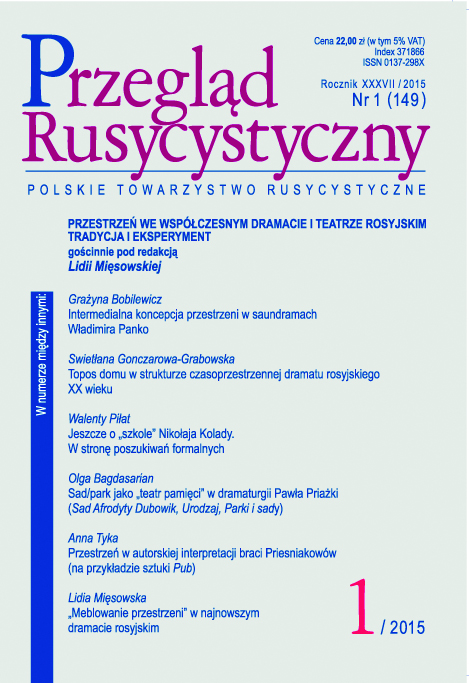
К.Н. Дубровина: Библейские фразеологизмы в русской и европейской культуре. Москва: Изд. ФЛИНТА: Наука 2012
Review of K.N. Dubrovina's work on biblical prhaseologisms in Russian and European culture.
More...We kindly inform you that, as long as the subject affiliation of our 300.000+ articles is in progress, you might get unsufficient or no results on your third level or second level search. In this case, please broaden your search criteria.

Review of K.N. Dubrovina's work on biblical prhaseologisms in Russian and European culture.
More...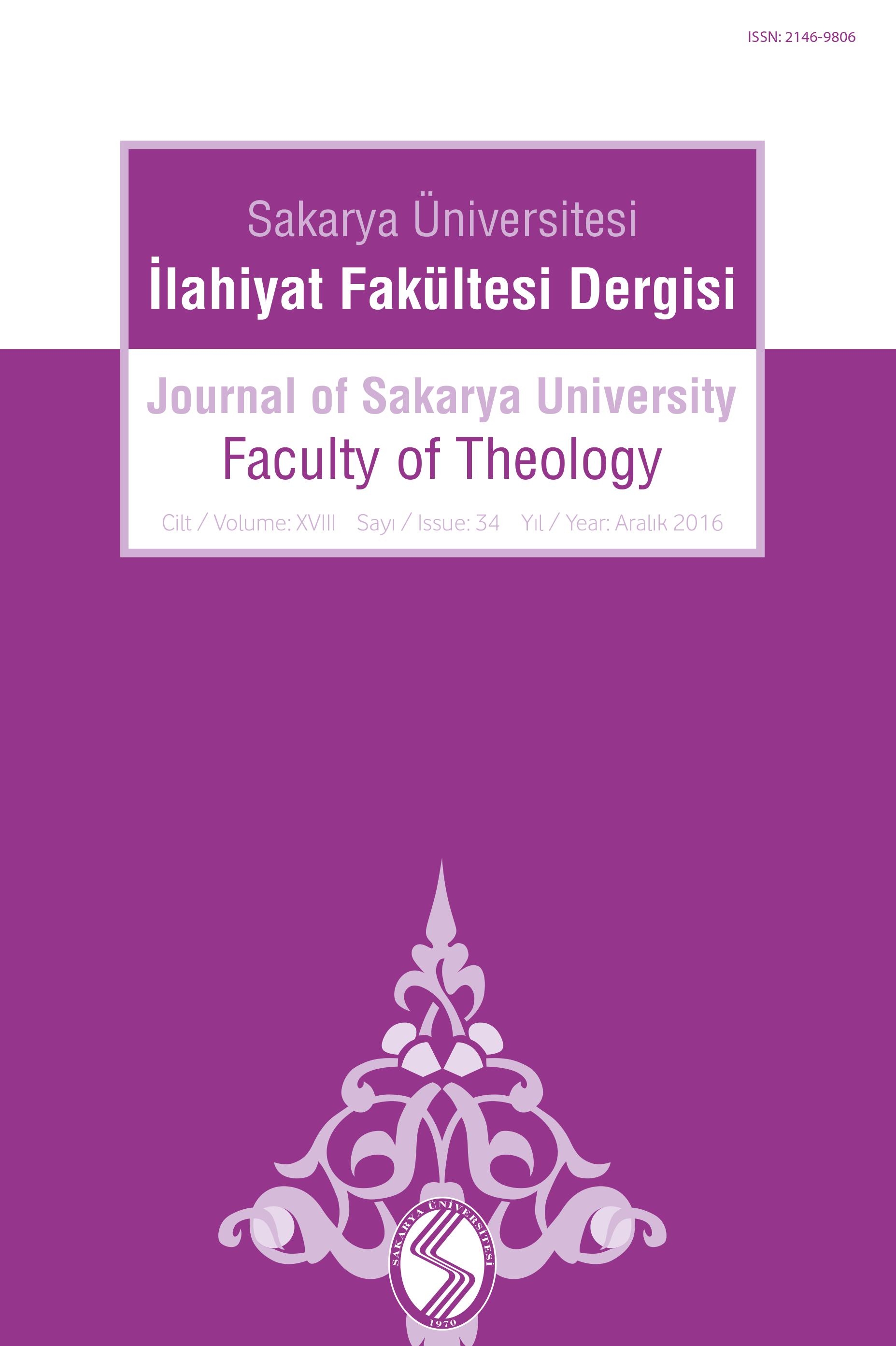
The purpose of this study is to examine the statements of Ibn al-ʿArabî regarding religions and beliefs through the perspectives of William Chittick and Reza Shah-Kazemi comparatively. Even though his expressions are occasionally elaborated in the light of the theory of the religious pluralism based on Western-Christian thought, by considering the universal message of the Qur’ān Chittick and Shah-Kazemi identify these expressions with “universalism.” This universalist approach bases on the distinction between “ontological will” and “religious will,” and “submission” which is the substance of the term “islam.” While Chittick and Shah-Kazemi agree on issues mostly, it is possible to see that in some sense they differ from each other in their departure points and results. From this perspective, it is going to be seen that Ibn al-ʿArabî’s expressions encompass both the divine religions and other religions which do not have a revelation. To examine Ibn al-ʿArabî’s expressions by taking into account the propositions of the religious pluralism will be helpful to comprehend his outlook on the Qur’ān and the Prophet Muhammad.
More...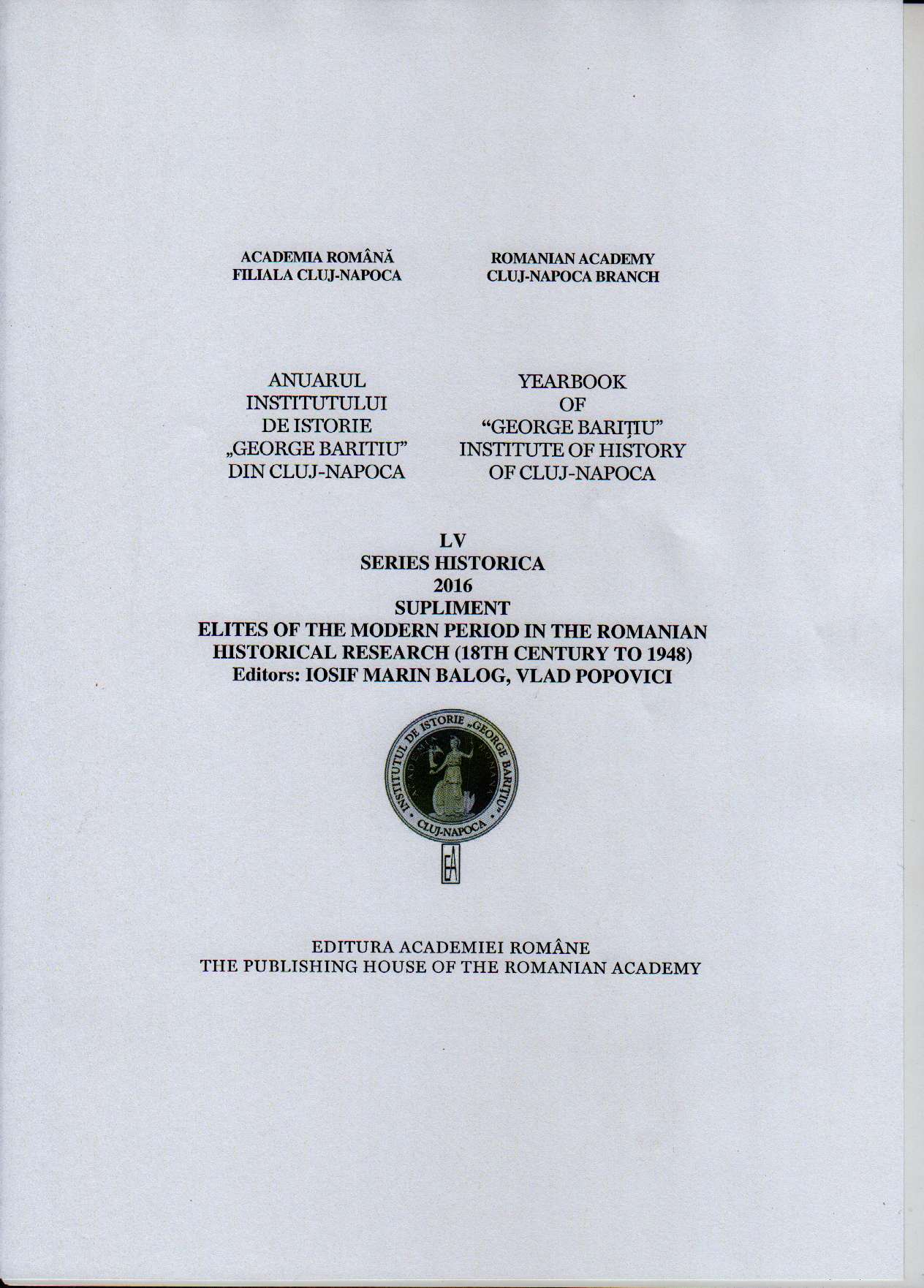
For the period under study, what became evident in the Romanian Greek-Catholic Church was the continuing trend of priestly dynasties, in which the sons carried further the mission of their fathers and grandfathers. The difference was that by the second or third generation, the sons of priests were prepared to operate at a higher level, assuming leadership roles in the ecclesiastical administration. Our paper aims to present a case study referring to the social origins of the higher clergy in the Greek-Catholic Dioceses of Oradea and Gherla. In this sense, the prosopographical analysis of the published and unpublished documents suggests the existence of genuine “priestly dynasties” in the area of the two dioceses, whence a good part of the local cultural and ecclesiastical elite emerged. We should note, in this regard, that 7 of the 28 canons who served in the Episcopal Cathedral Chapter of Oradea from 1853 to 1918 were of priestly descent, while in the Diocese of the Gherla the percentage was higher: 12 of the 20 capitular canons came from the ranks of the clergy.Significantly, many of the capitular canons who served in the two Greek-Catholic dioceses and were of unquestionable clerical descent became leading representatives of the Transylvanian cultural elite. Among these should be mentioned just a few names, such as Ioan Alexi, Iosif Papp-Szilágyi, Augustin Lauran, Ioan Papiu, Macedon Pop, Mihail Şerban, etc. This was possible thanks to the intellectual training they had received, the work they had accomplished and their degree of involvement in the process of societal enlightenment, in their capacity as teachers, as members of Astra, or as authors of scientific works and textbooks.
More...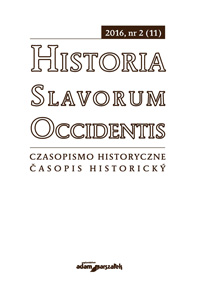
The article explores the specificity of early medieval Hungarian Christi-anity, which lay in the existence of two metropolises in the Kingdom, i.e., Esztergom and Kalocsa, and the belief in the sanctity of the Árpád dynasty, expressed as early as in the second half of the thirteenth century.
More...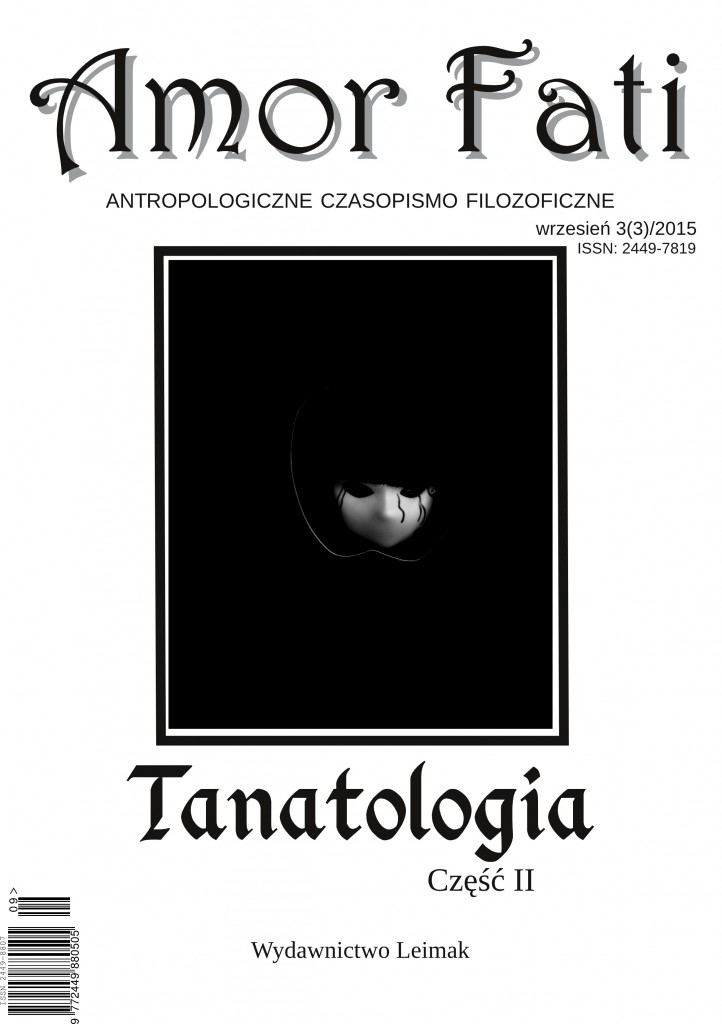
The main theme of this work is the question of the resurrection of the body as a problem of the philosophical concept of St. Thomas Aquinas and, more specifically, the way in which interpreted the teachings of Aquinas Stefan Swieżawski, historian of philosophy, a medievalist associated with the so-called Lublin Philosophical School. The problem of eschatology does not seem strictly philosophical field, but in Thomas thought it is deeply rooted in his metaphysics and anthropology, which is why solutions for these disciplines have a bearing on the problem of reunification of the soul and the human body after death. Eschatology is the culmination of his thoughts. You can see the consequences of the earlier developed the science of man and his existential structure, so in the context of this work shown will be the philosophical basis of the concept of the resurrection of the body.
More...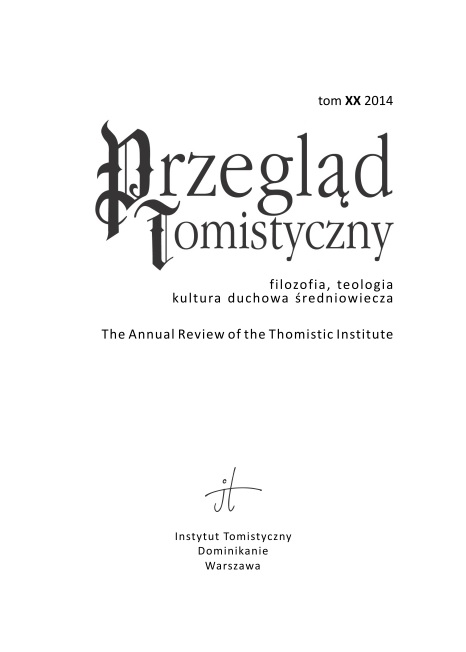
Review of: Wim Decock "Theologians and Contract Law. The Moral Transformation of the Ius Commune (ca. 1500–1650)", Brill: Leiden, 2013, 723 p. by: Marcin Bukała
More...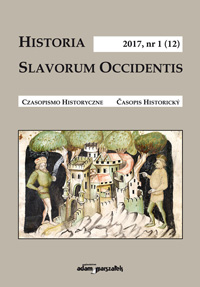
This paper presents the history of the archival collection Benedyktyni Lubiń [Benedictines Lubiń], stored in the State Archives in Poznań, from the moment the records were created until they were taken over by the archival service. The article looks at how the monastery records were organised in order to control their growing amount.
More...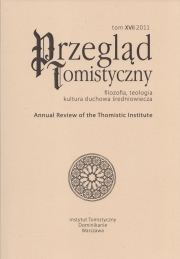
L’article est composé de deux parties. La première apporte d’abord un bref renseignement sur la personne et l’oeuvre de François de Brzeg, maître ès arts et docteur en théologie à Cracovie au cours de trois premières décennies du XVe siècle, puis une analyse du contenu de la Recommandation. L’édition de celle-ci — fondée sur une copie manuscrite unique, conservée à Wrocław, Bibliothèque Universitaire, ms. I Q 380, f. 76-84 — ainsi que sa traduction polonaise, constituent la seconde partie. Considérant la Recommandation comme discours métaphilosophique, son analyse met en relief la fonction introductive et auxiliaire de la philosophie par rapport à la théologie et la foi chrétiennes. Marquée profondement par son caractère moraliste, l’idée de la philosophie soutenue par le discours, est fondée sur la prééminence des valeurs morales par rapport aux valeurs intellectuelles, philosophiques et théologiques. D’où le postulat adressé aux jeunes licenciés de cultiver autant la science que la vertù. Cette vision de la discipline philosophique soumise aux exigences de la morale chrétienne semble continuer, au XVe siècle, plutôt la tradition métaphilosophique remontant aux Pères, que celle de la scolastique universitaire et de la dévotion médiévale. Il est cependant à souligner que les deux tiers environ de la Recommandation ont été copiés surl’Expositio Regulae b. Augustini de Humbertus de Romains, théologien et maître général de l’Ordre dominicain au XIIIe siècle. Dans ces parties plagiées du texte, riches en „belles pensées” des auteurs antérieurs, sont inscrites toutes les idées métaphilosophiques constituant l’essence même du discours du maître cracovien. En fait, notre plagiaire a opéré une „translation” des idées du célèbre théologien dominicain du XIIIe siècle vers le milieu universitaire cracovien du XVe.
More...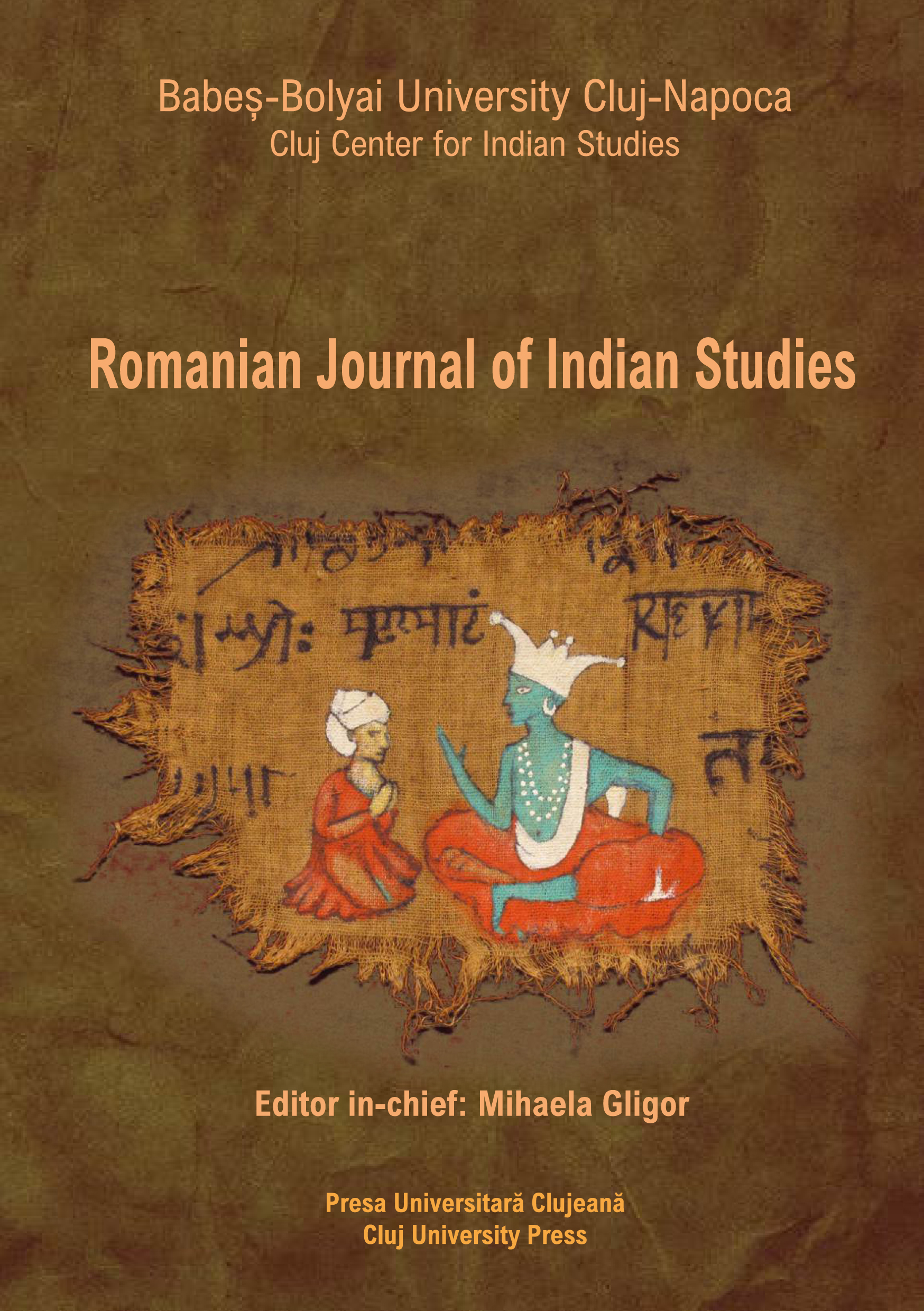
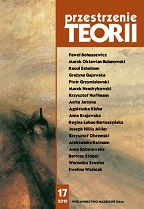
Review of: Artur Jocz "Przypadek „osy rozbójniczej ”. Rozważania o gnostycyzmie i neognozie w literaturze polskiej przełomu XIX i XX wieku" by: Anna Sobolewska
More...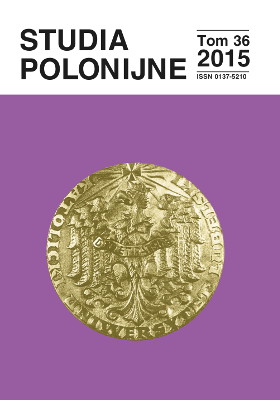
The International Schoenstatt Movement is the idea of Fr. Joseph Kentenich, who wanted to spread it in Eastern Europe. He often spoke of Russia, bearing in mind the then Soviet Union territory (1922-1991). In 1976, sisters of the Polish Province of the Schoenstatt Institute of the Sisters of Mary created the Missionary Circle, whose members prayed for the mission and then undertook to organize their trips and work beyond the Polish Eastern border. On May 29, 1990, the first sisters departed from the Sanctuary of the Mother Thrice Admirable in Otwock-Świder to Grodno (then in the Republic of Belarus). They served in the parishes of St. Mary of the Angels and of St. Francis Xavier and of Immaculate Conception of the Most Blessed Virgin Mary in Grodno and Indura, Brzostowica, Kwasówka, Mosty, Mosty Prawe, Mikielowszczyzna, Różanka, Balla Kościelna, Grandzicze, Putriszki, and Minsk. They conducted catechesis sessions preparing for the sacrament of Confession and Holy Communion. They undertook charity work by organizing Caritas, apostolic work among girls, mothers and families of Schoenstatt, the Apostles of Mary, the circles of Adoration of the Blessed Sacrament, the pilgrimage sanctuaries of Mater Ter Admirabilis, and the retreats for girls. In 2015, the sisters celebrated the 25th jubilee of their work in Belarus.
More...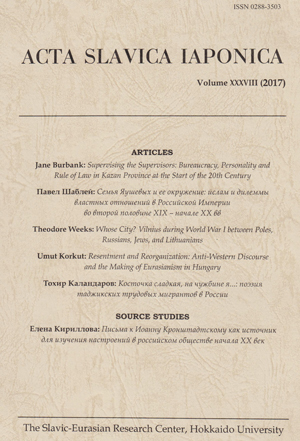
Shirin Akiner - Joanna Kulwicka-Kamińska, Przekład terminologii religijnej islamu w polskich tłumaczeniach Koranu na tle biblijnej tradycji translatorycznej (Toruń: Wydawnictwo naukowe Uniwersytetu Mikołaja Kopernika, 2013), 357 pp. with attached CD-Rom. Tomasz Kamusella - Jolanta Sujecka, ed., Macedonia: Land, Region, Borderland [Ser: Colloquia Balkanica, Vol 2] (Warsaw: Wydawnictwo DiG and Faculty of Artes Liberales, University of Warsaw, 2013), 581 pp. Nakada-Amiya Mizuho - Stefano Bianchini, Eastern Europe and the Challenges of Modernity, 1800–2000 (London and New York: Routledge, 2015), 288 pp. Sengoku Manabu - Gyula Horváth, Spaces and Places in Central and Eastern Europe (London and New York: Routledge, 2015), 272 pp.
More...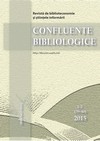
The author tackles the subject of Romanians from Transylvania who withstood several persecutions and unjustness thanks to two supports: moral first, the second national consciousness. The practice of long Orthodox religion which around oppressed people gathered with great faith, in which the priests knew to conserve good religious rules and traditions but also to convey the hope of some happier days, constituted an important support. Another factor represents the national language and consciousness. The fact that they are not alone and their brothers from the two Romanian countries are beside them, constituting a nation, believe that has contributed to survive in unfavorable conditions. The topic is reflected in the chapters: Union with the Roman Catholic Church; the work of bishops Ion Micu (Klein), Inochentie Petru Paul Aron ; Metropolitan Serbian domination over Romanian Church of believers in Transylvania, the participation of the Romanian faithful at the seven years ‘ war with Prussia along with Austria; schools from Blaj; tearing down monasteries in Transylvania (Făgăraş District)
More...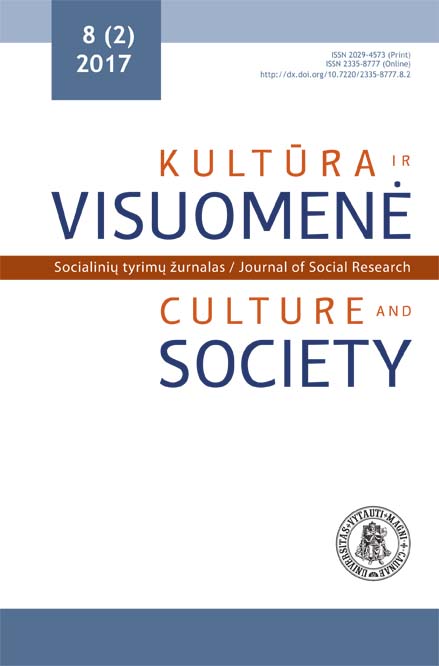
An important aspect of religious accommodation in the public sphere is the willingness or otherwise of the State to accommodate religious groups, as well as individuals professing religious beliefs. The accommodation of religion in the public sphere can depend upon law and policy makers choosing to recognise certain beliefs and practices as religious beliefs and practices and, in certain contexts, this recognition is contingent upon religious groups acquiring legal personality. Achieving this recognition has proved to be problematic for minority religious groups, especially in Eastern European jurisdictions. This paper seeks to consider State responses to regulating minority religions, including new religious movements, in Eastern Europe by reference to a number of recent cases before the European Court of Human Rights. It will pay particular attention to the extent to which approaches to the acquisition of legal personality for religious groups may restrict or undermine religious freedom and accommodation.
More...
Pope John Paul II (2005) called communism an “ ideology of evil”, and fighting it became a centrepiece of his pontificate. As Samuel P. Huntington (1993) argued in his theory of a “third wave” of democratization that occurred after the 1960s, the Church was instrumental in helping Western powers undermine the credibility of the Soviet system, a process that was aided by the Second Vatican Council (1962–1965). Furthermore, Gilles Kepel (1994) and José Casanova (1994) have analysed the role played by the Catholic Church in a number of countries where religion has been a vanguard for social movements seeking greater freedom amidst national political tensions. This paper examines the legacy of John Paul II’s efforts to oust Soviet communism from not only his homeland of Poland, but from Europe altogether. The paper begins with an examination of John Paul II’s critique of communism as a flawed system and his emphasis on Central and Eastern Europe’s Christian heritage. More specifically, how his writings and campaigning helped to undermine communism in Central and Eastern Europe will be discussed. The paper will then move to an assessment of the legacy of John Paul II’s efforts against communism and consider the role of contemporary Catholicism generally across Central and Eastern Europe as it tries to stake out its share of the religious marketplace against other religions, including Orthodoxy, Protestantism and new religious movements. This will be examined through theories of post-secularism, and secularism. The paper argues that Catholicism has managed to re-emerge as a powerful force in Central and Eastern Europe, but still has work to do if it is to maintain its position in this region and be what Karl Rahner called a “world Church”.
More...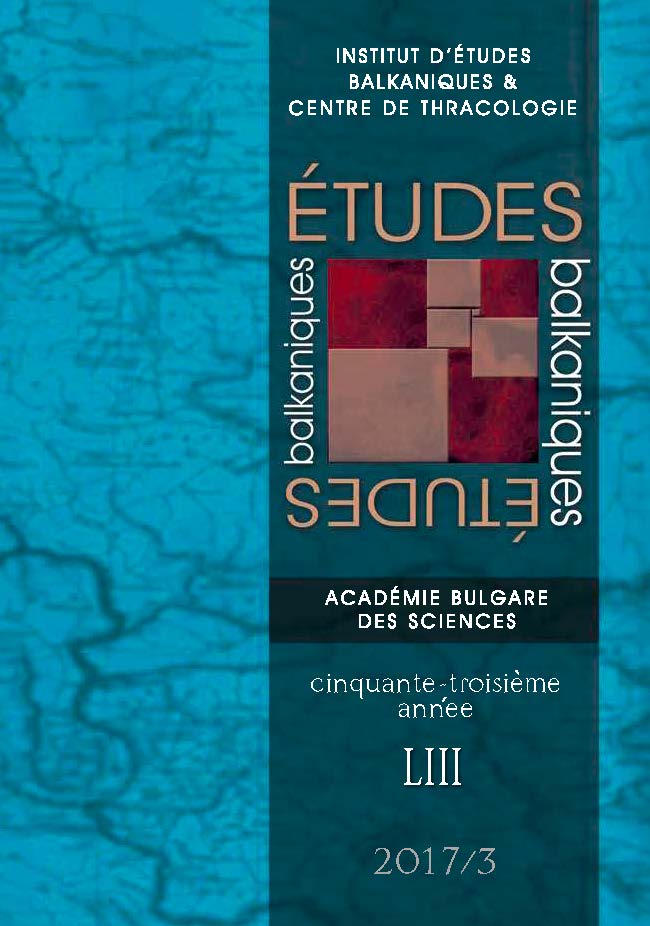
The object of the present study is a status animarum of the Catholic Saxon parish in Câmpulung/Langenau (Wallachia) drafted by the Franciscan rector Francesco Maria Spera da Narni. The document is an appendix to a letter he sent on August 15th 1646 to the cardinals of the Holy Congregation for the Propagation of the Faith. The source registered the names of all the parishioners, while the age has been mentioned only for children and widows. The text offers us the possibility to better understand a community with deep Lutheran nostalgia in the age of the Counter-Reformation.
More...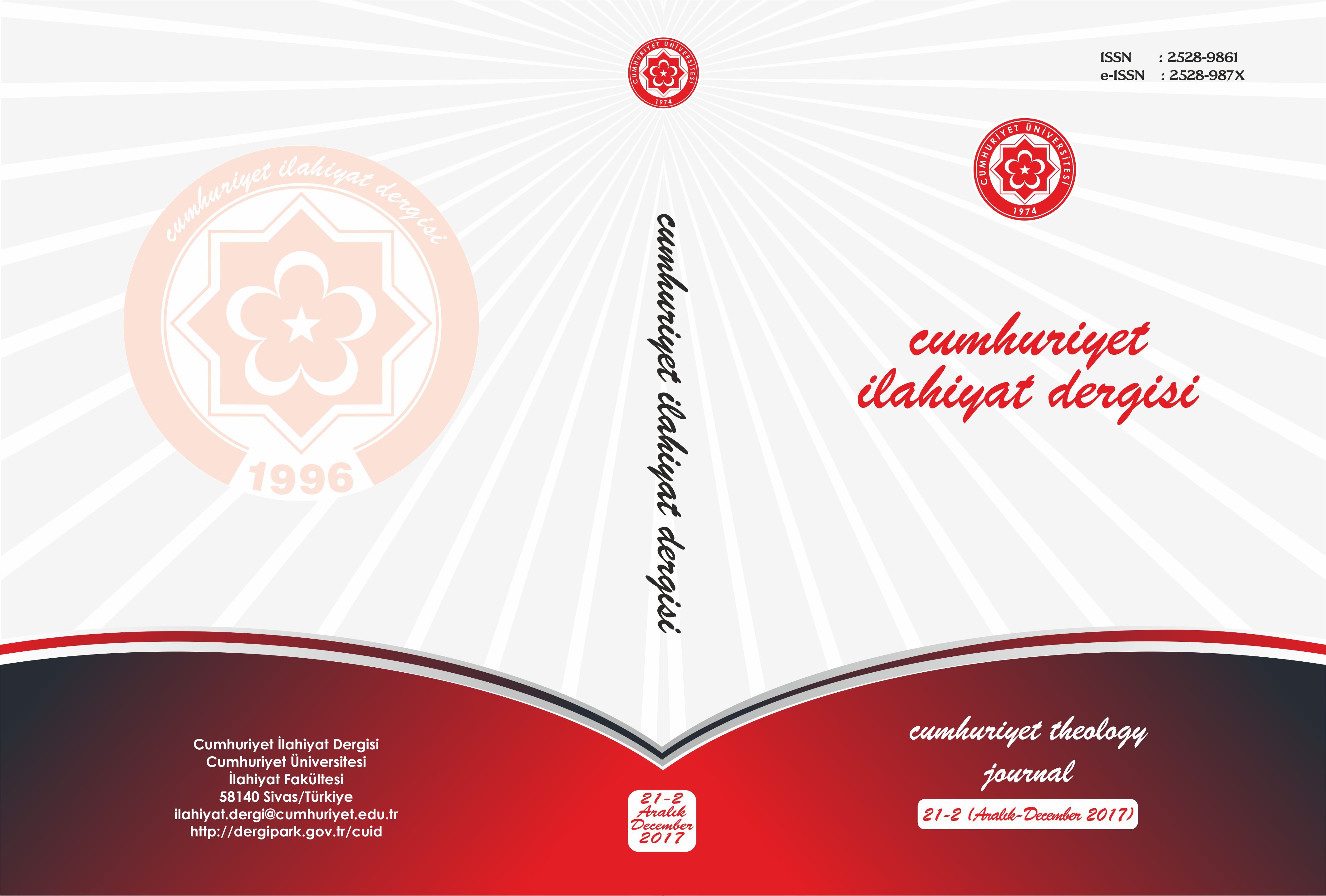
This study aims to discuss the basic argument that sociology, as a science, emerged as an intellectual response to the lost sense of community during social and cultural changes. This argument carries the assumption that the dominating metaphors and perspectives of classical sociology are informed by conservatism. In sociology, this claim is supported by (both) well-known and ambivalent theoretical structures that are developed to explain the process of social change. This study aims to make a criticism of nostalgic sociology considering the idea that the fundamental assumptions of the ambivalent theoretical structure in sociology are nostalgic. In addition, this study also aims to critically read the historical development of Islamism, one of the modern ideologies, with nostalgia and utopia. The suggestion of the article is that either classical sociology or Islamism –two subject appear differently in terms of their topics- gave similar intellectual reactions about the subject that they are unable to cope with ‘the present’ and produce a ‘golden age’ discourse as a solution to ‘the present’. The argument of the study is that either the effort of idealizing ‘the past’ in classical sociology or the myth of coming back home in Islamism against cultural alienation and sense of loss which are lived in ‘the present’ are actually determined by sovereign modernity paradigm. Summary: Behind the nostalgic paradigm, there is a rebuilt history that is shaped as a transition from feudalism to capitalism. In this history, the decline of feudalism corresponds to the loss of rural community, the loss of personal expressionism and the loss of unregulated society. In classical sociology, the heritage left by the solution of this historical reconstruction of society has become common. The anomaly of the modern world is precisely where the modern society from traditional society has emerged in the pathological state created by the loss of social ties with the passing. This pathological condition was first seen in Swiss mercenaries serving away from home, diagnosing nostalgia as a diagnosis of discomfort. We know that Johannes Hofer, who has a sense of humor, has not written any prescription for this disease, which gives some common signs with his melancholy. Sociology, shaped by three different intellectual movements as intellectual responses to the French and Industrial revolutions that allow the transformation of the European society, has taken its place as its focal point, and in the pioneering names, this change is "a change in everything at a dizzying pace, everything that has happened has evaporated and the glory of the world has deteriorated.” Modernity, which refers to the ideals of enlightenment, is blessed not to progress by nature, fluid, rational, contingent, lacking certainty. In fact, this blessing has brought with it the enemy of tradition to the 'new' with reference to its etymological origin. This sophisticated and complex structure unique to modernity only, has inspired some thinkers to conceive of an idealized past or future that is now determinative. Both of these ideas are moderators. The nostalgia becomes modern because of the longing for a home that no longer exists or has never existed. Nostalgia is coeval with modernity. The article refers to Stauth-Turner's nostalgic paradigm, which provides the meta-phasic and meta-phase dominance of classical sociology detailed in Nietzsche's Dance. This paradigm consists of four main components. The first is that the history that we can summarize as a departure from the golden age when the world was a nest for man is seen as a decline and a loss. History is a history of sorrow and despair, as this decline will continue to exacerbate in the future. The example of such a feeling of grief in society theory is Weber's fate sociology. Because, according to Weber, whatever is waiting for us in the future is the polar night of the icy darkness, not the sunlight of summer. The second component of the nostalgic paradigm is the sense of secularization, together with the loss of integrity and moral certainty. This nostalgic trajectory is a very powerful secularization that emphasizes that such devastating social processes as urbanization, capitalist industrialization and the rationalization of everyday life, such as the diversity and complexity of social structure, the spread of scientific knowledge, urbanization with increasing population ratio, it brings forward its theory. With the announcement of the death of God, the gate of a competing and conflicting world has been opened, from which we have been transformed into a very godlike world. It is possible to observe a similar point of view in classical sociology in Durkheim, which has a theoretical basis for the transformation of social structures through professional distinction in the form of mechanical and organic solidarity. Durkheim analyzes social change in a deliberate way, and pre-change stake favors moral coherence. Moral coherence is now lost when collective consciousness is generally weakened in the post-change phase. The third trajectory we encounter in the nostalgic paradigm is the loss of individual autonomy and the decline of genuine social relations. With the loss of the moral unity, the individual has been caught under the domination of the bureaucratic state, in macro-social processes and institutions. It is inevitable that the individual who lost his autonomy is subject to the denial. The increasing exposure of the individual to social bureaucratic associations has been conceptualized by the iron cage metaphor in Weberian sociology. The enlightenment is the result of the panoptic collection of prison. So there is a nostalgic stance in this compound of the nostalgic paradigm that autonomy-ben lost because of the fall of the bureaucratic world under the domination of the modern state. In the nostalgic paradigm, the ultimate component is the feeling of laxity, spontaneity and loss of naturalness. Here, the individual is subject to not only macro-social processes but also micro-ethics. That is, it is understood that Adorno's "managed society" or Foucault's notion of closure prevents the individual's true emotions and enthusiasm, and that the consumer culture is preoccupied with certain preconceived ways of doing in a world dominated. To sum up, the metaphor of nostalgia that we are living in a world where we have been seized by administrative rules of a central state in a way that has lost the moral certainty and autonomy of the individual. The return to home, which is found in a significant part of the texts and practices put forward in the name of Islamism, has reached a deterministic attitude just as it was in classical sociology. In the nostalgic imagination where those who cannot cope with it are thought of as a safe harbor, there is a certain attitude towards deterministic ideologists that simplify, sanctify, and therefore falsify. Indeed, the imagination of a supra-historical, supra-community model for a time like the Golden Age discourse and for all time is itself history from the very beginning to the end. Therefore, it is a manifestation of a major historical process and the ideological design of sociality. The rhetoric discourse presented as a remedy in the present is possible with an anachronistic point of view which idealizes the past, and therefore the reality is distorted. The authentic one is extremely informal. This kind of discourse of authenticity, which is produced as opposed to the modernity that all that is solid melts into air, eventually has to make iron cages around it. As a result, the nostalgic rhetoric, which aims to be a modern chivalrous remedy that everything changes at a dizzying pace, has been determined by the paradigm of modernity, thanks to its self-reflexive nature which contains the opposite.
More...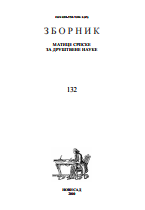
Review of: Saša Kicošev, Drago Njegovan "Razvoj etničke i verske strukture Vojvodine"; Novi Sad: Prometheus and Little Historical Society, 2010, p. 61 by: Slobodan Bjelica
More...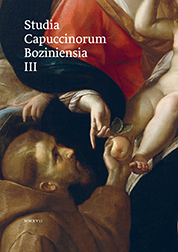
The beginnings of the Croatian literature in Bosnia and Herzegovina are closely linked with the literary and cultural activity of the Franciscan order that settled there as early as in the 13th century. The first well-known author from the region was Juraj Dragišić (1448 – 1520), a humanist scholar and philosopher from Srebrenica. Respected in European humanist circles, this prolific author composed philosophic and theological works in Latin, spent some time in Dubrovnik, Paris and Oxford and travelled extensively throughout Europe. As Franciscans settled in this Balkan province, the church leaders as well as the Hungarian king, who ruled Bosnia at the time, expected them to fight the heresy spread by the Bosnian church, the so-called crkva bosanska (ecclesia Bosnae). The beginnings of the literary tradition in Bosnia and Herzegovina in vernacular were marked by its first printed book in 1611, an instructive prose work “Nauk krstjanski” written by the Franciscan Matija Divković (1563 – 1631) in bosanica – a version of Cyrillic script used at the time in Bosnia and Croatia. The author himself assisted the printing srocess in Venice, as no printing facility was available at the time in Bosnian territories. Throughout the 18th century, the Franciscan monks authored several chronicles with themes of universal history, the history of Bosnia and the history and survival of the Franciscan order in its most important monasteries in Fojnica, Sutjeska and Kreševo.
More...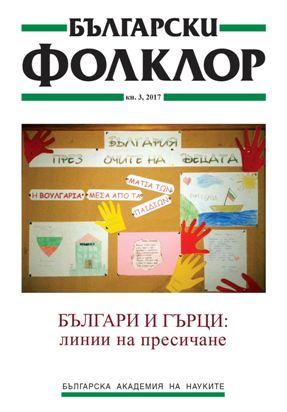
The paper refers to a particular type of narrative stories about witches believed to be able to turn the moon into a cow or a calf, to pull it down, to milk it or to question it about the future. Such beliefs are agreed to be of an ancient origin and the collection of the texts from Epirus published by Benekos contains old variants of these stories – the witches, dressed in white, play musical instruments, dance offering the moon some food and invite it to come down to question it about the future. References to similar stories are found in the Hellenistic literature and in the pottery fragments. Modern Greek tradition offers, however, modifications of the stories – the witches milk the moon turned into a cow. This motif seems to be quite new and coming from the traditions of the Balkan Slaves, first of all from Bulgarian tradition where the plot is present not only in a narrative form but also in church paintings.
More...